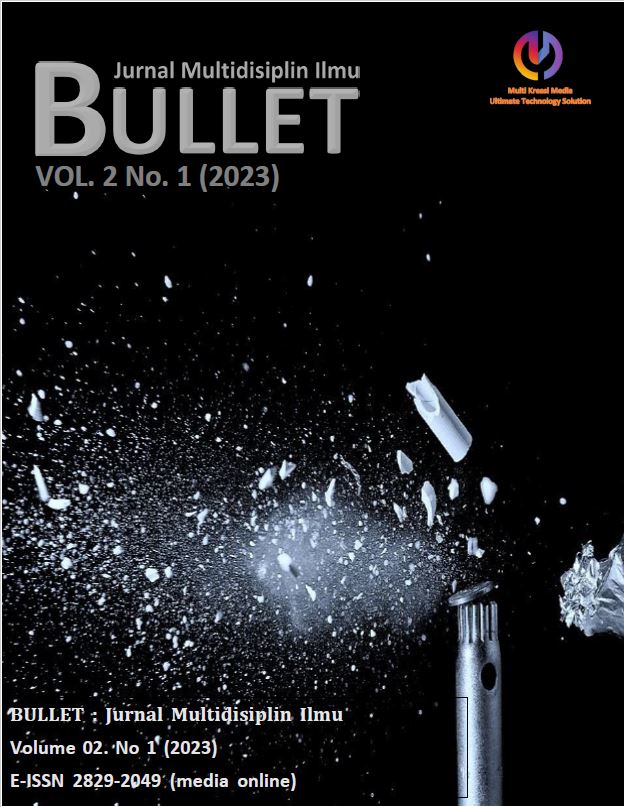Getting to Know the Open Proportional System in Indonesia Towards the 2024 General Election
Keywords:
General Election, General Election System, Open List Proportional SystemAbstract
The electoral system in Indonesia has not changed too much because it still uses proportional, starting from a closed proportional system (close list PR) to an open proportional system (open list PR). The phenomenon that occurs in elections with an open proportional system has been carried out since after the amendment to the 1945 Constitution with various regulations issued one after another. Both of these systems raise pros and cons in society. In order to prevent multiple interpretations, it is necessary to have an understanding of the development of a proportional system in legislative elections in Indonesia, what are the advantages and disadvantages of each of these systems, so that people can find out the reasons for choosing the electoral system in Indonesia. At present the debate regarding the 2024 general election system (Election) has re-emerged along with the judicial review of Law Number 7 of 2017 concerning Elections to the Constitutional Court (MK). Considering that the electoral system is an important aspect of holding elections, the 2024 election system that will be used later must be completed as soon as possible. The approach used in this research is normative juridical. Specified as descriptive research, data collection techniques by using literature to obtain secondary data, and data analysis techniques are analytical descriptive
References
Asfar, M. (2004). Pemilu dan Perilaku Pemilih (P. Eureka (ed.); 1st ed.). Pustaka Eureka.
Asshiddiqie, J. (2006). Pengantar Ilmu Hukum Tata Negara (II). Sekretaris Jenderal dan Kepaniteraan Mahkamah Konstitusi RI.
Azed, A. B. (2000). Sistem Sistem Pemilihan Umum. Badan Penerbit Fakultas Hukum Universitas Indonesia.
Budiarjo, M. (2009). Dasar Dasar Ilmu Politik. Gramedia Pustaka Utama.
Fahmi, K. (2011). Pemilihan Umum Dan Kedaulatan Rakyat. PT Raja Grafindo Persada.
Mahmud, P. (2005). Penelitian Hukum. : Kencana Prenada Media Group.
Mashad, D. (1998a). Reformasi Sistem Pemilu dan Peran Sospol (1st ed.). Gramedia Widiaswara.
Mashad, D. (1998b). Reformasi Sistem Pemilu dan Peran Sospol Abri. PT Gramedia Widiasarana Indonesia.
Merdeka.com. (2023). Menkumham Yasonna Soal Sistem Pemilu Coblos Partai: Tunggu Putusan MK. Merdeka.Com. https://www.merdeka.com/peristiwa/menkumham-yasonna-soal-sistem-pemilu-coblos-partai-tunggu-putusan-mk.html
Moh. Kusnadi, H. I. (1988). Pengantar Hukum Tata Negara Indonesia. Sinar Bakti Fakultas Hukum UI.
Musa, A. M. (2003). Sistem Pemilu: Proporsional Setengah Hatitle. Pustaka Indonesia Satu.
Ranawijaya, U. (1983). Hukum Tata Negara Indonesia (dasar-dasarnya) (1st ed.). Ghalia Indonesia.
Santoso Topo, I. B. (2019). Pemilu di Indonesia: Kelembagaan, Pelaksanaan dan Pengawasan (1st ed.). Sinar Grafika.
Simanjuntak, S. T. P. P. (2018). Kuota Hare Dan Sainte Lague Dalam UU Pemilu. LK2 FHUI. ttps://lk2fhui.law.ui.ac.id/kuota-hare-dan-sainte-lague-dalam-uu-pemilu/
Sodikin. (2014). Hukum Pemilu: Pemilu Sebagai Praktek Ketatanegaraan. Gramata Publishing.
Soemitro, R. H. (1988). Metodologi Penelitian Hukum Dan Jurimetri (Cetakan ke). Ghalia Indonesia.
Soerjono Soekanto, Mamudji, S. (2003). Penelitian Hukum Normatif. Rajawali Press.
Syamsuddin. (2014). Partai, Pemilu, dan Parlemen Era Reformasi. Yayasan Pustaka Obor Indonesia.
Undang-undang
Undang – Undang Dasar Negara Republik Indonesia Tahun 1945.
Undang- Undang Nomor 10 Tahun 2008 tentang Pemilihan Umum Anggota Dewan Perwakilan Rakyat, Dewan Perwakilan Daerah, dan Dewan Perwakilan Rakyat Daerah
Undang-Undang Nomor 7 Tahun 2017 tentang Pemilihan Umum




















